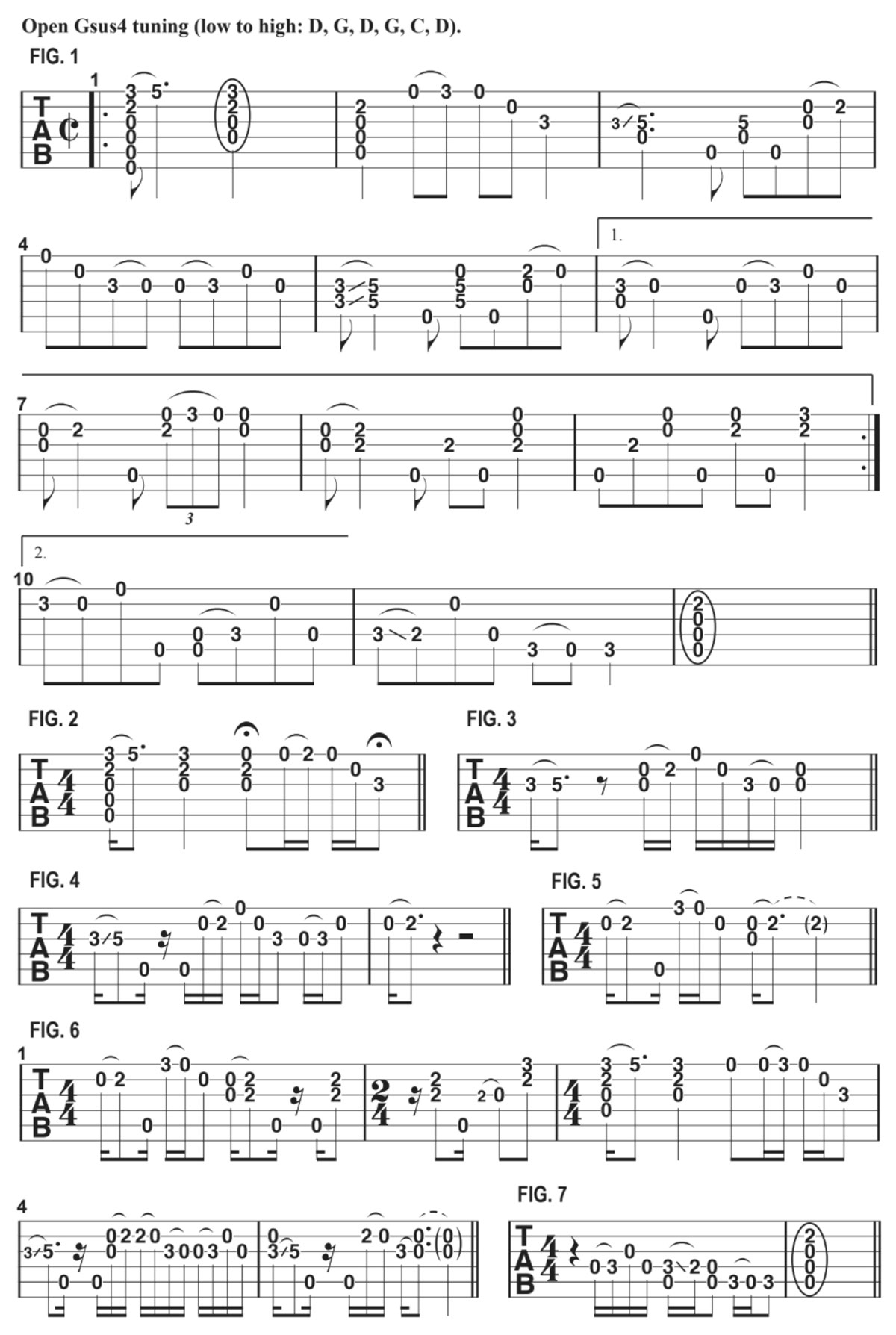Perfect the art of clawhammer guitar with Molly Tuttle's lesson on how to play Take the Journey
The supremely talented multi-instrumentalist teaches a choice cut from her latest album, When You're Ready
Let's continue our exploration of the technique and style of clawhammer guitar with a look at the song Take the Journey, from my latest album, When You’re Ready.
I wrote this song with my friend Sarah Siskind, and as we were writing it, the song developed an “old-time”-y sound with a driving, modal feel that I felt would work well with the alternate tuning I use for clawhammer guitar, which is (low to high) D, G, D, G, C, D.
As we discussed in the last column, clawhammer guitar technique finds its origins in clawhammer banjo, and for both instruments the pick-hand is held in a claw-type shape, and the nails of the index and middle fingers are used to pick the higher strings while the thumb plucks the lower strings and sometimes one of the higher strings.
Figure 1 represents the entire first section of Take the Journey. The clawhammer technique I use here is a bit more complex than the typical “bum-ditty” pattern I demonstrated previously.
The general idea with this guitar part is that it replicates the vocal melody as the song progresses.
As shown in Figure 2, I begin with a G7 chord, sounded by adding my fret hand’s index finger at the 2nd fret on the 2nd string and my middle finger at the 3rd fret on the 1st string, followed by an immediate hammer-on on that string to the 5th fret with the pinkie.
In bar 2, I use my pick-hand thumb to sound one of the melody notes. On beats 2 and 3, the index finger strikes the notes on the downbeats while the thumb is used on the upbeat of beat 3 to sound the open 2nd string. In clawhammer parlance, this technique is known as dropped thumb.

The melody line in bars 5 and 6, shown in Figure 3, is similar to that of bars 3 and 4, after which I move back to the higher strings to replicate the next part of the melody, shown in Figure 4.
Figure 5 illustrates the last part of the initial melody, shown here without the eighth-note triplet articulation. Figure 6 details the two-note chord in bar 8 for Figure 1, with both the 3rd and 2nd strings fretted at the 2nd fret, sounding what is essentially the V (five) chord, D, within the melodic pattern.
Of equal importance here is the subtle use of upbeat accents on the open 5th string throughout the entire pattern. Adding these upbeat bass notes helps propel the rhythm and push the song along.
The 1st ending is four bars long, making for a five-bar initial melodic pattern, which is common occurrence in Appalachian folk music, and then the form repeats the first five bars and then moves to the 2nd ending, which is devised from a lower melodic line, as shown in Figure 7.
The goal is to become comfortable with clawhammer technique overall, so that the subtle changes necessary to suit the melody will not feel overwhelming or disruptive to the rhythmic and technical flow. Take each part slowly at first and then gradually ramp up the tempo.
Get The Pick Newsletter
All the latest guitar news, interviews, lessons, reviews, deals and more, direct to your inbox!










